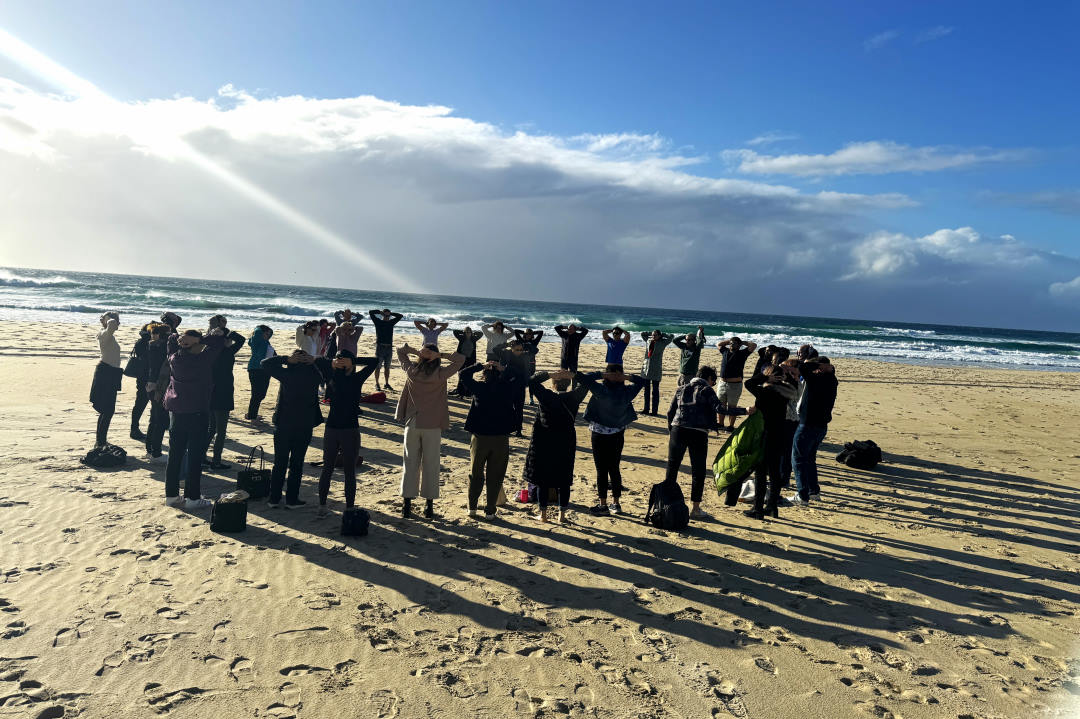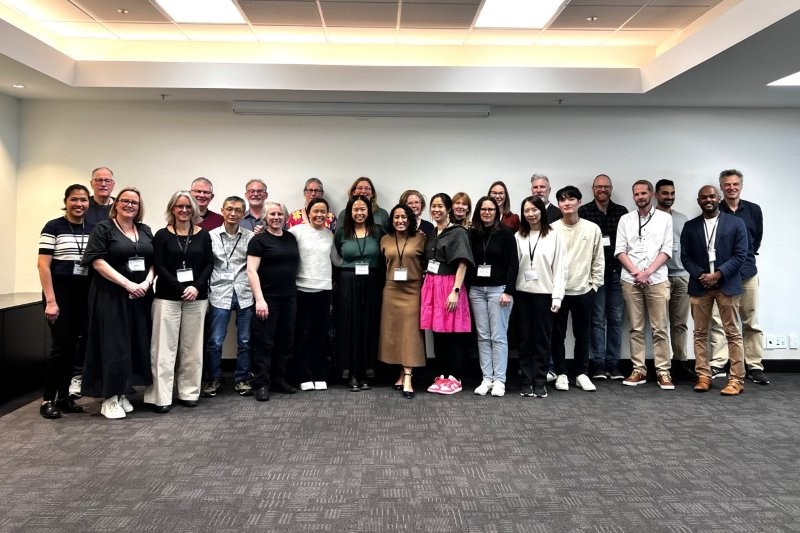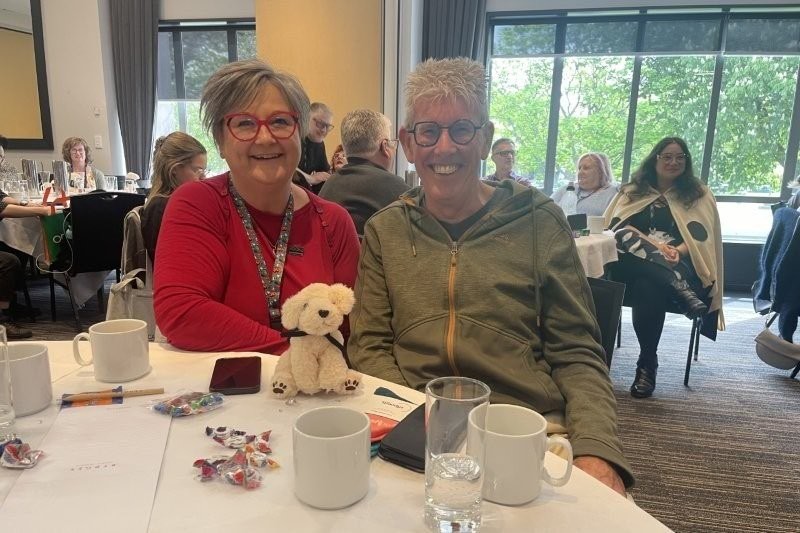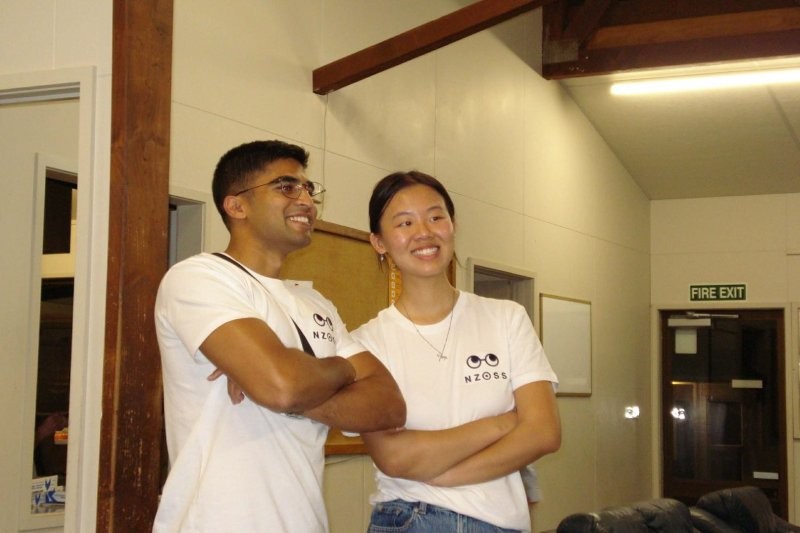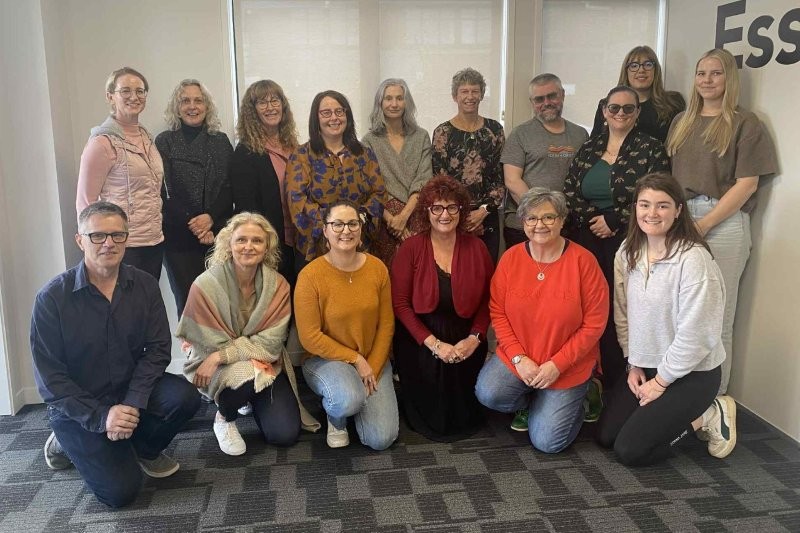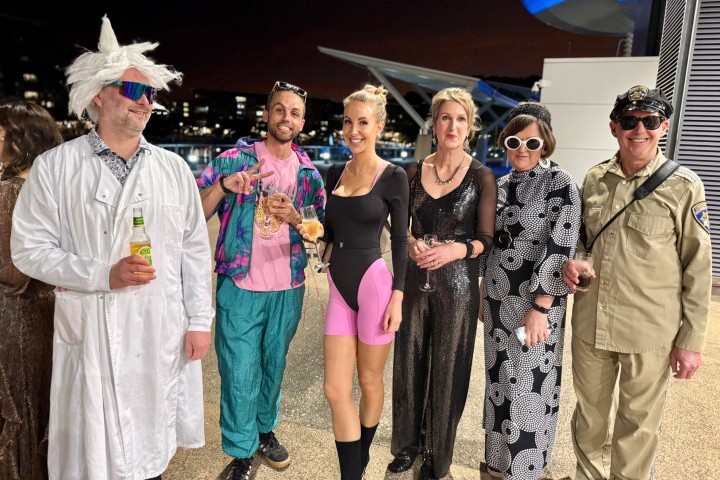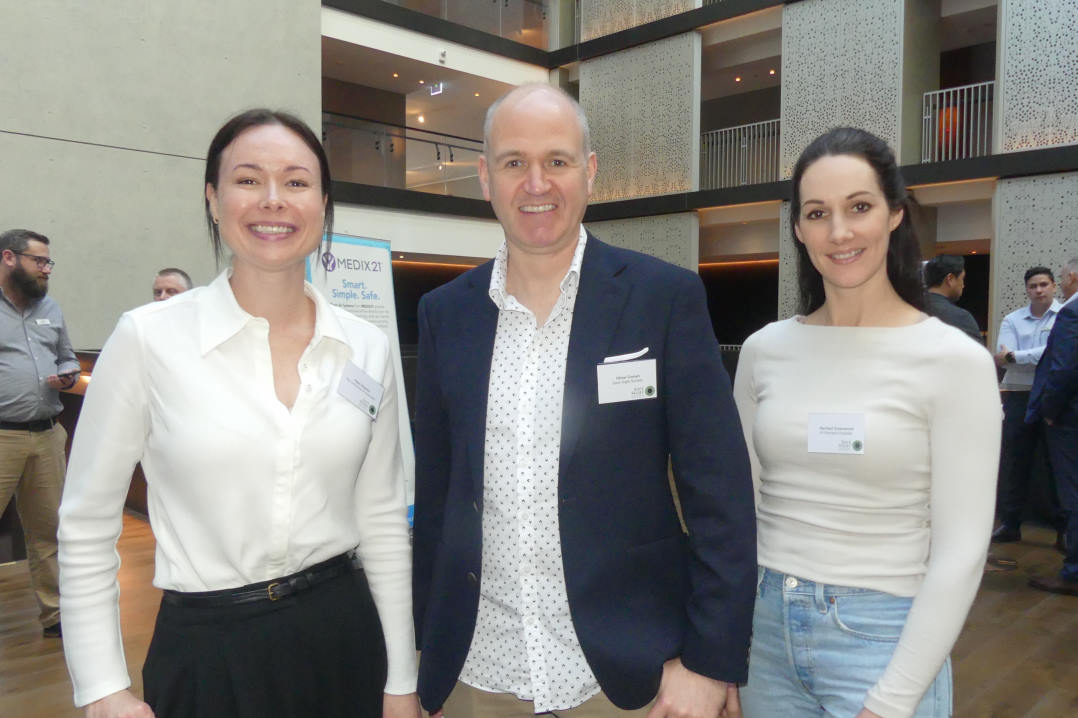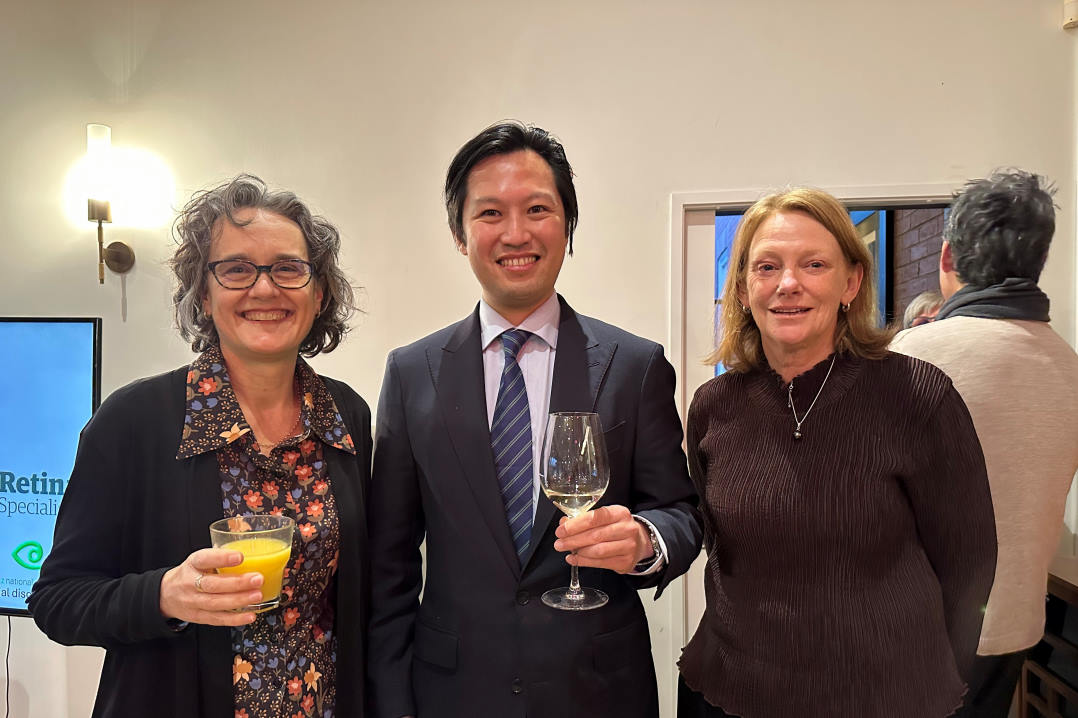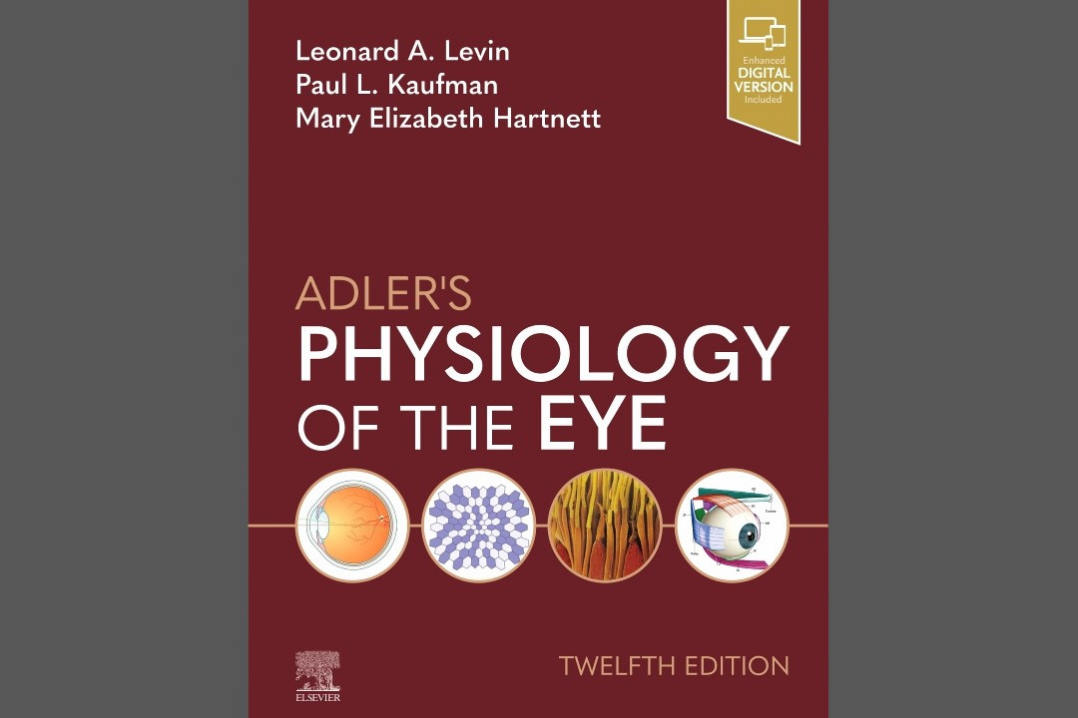Connect 2024 – the brains behind the vision
Connect 24, the annual Australasian College of Behavioural Optometrists (ACBO) conference, began with Canadians Drs Angela Peddle and Vi Tu Banh’s two-day pre-course on prescribing neuro-functional lenses. Eight Kiwis crossed the ditch to be part of the sold-out Gold Coast event, which was extended from the usual 30-delegate limit to 41 due to its popularity.
The concept behind the descriptor ‘neuro-functional’ is to help distinguish these lenses from those prescribed to optimise visual acuity. The term helps communicate that the spectacle prescription is intended to improve binocularity, visual performance, provide comfort and reduce symptoms and, where indicated, to guide an individual’s visual system towards more optimal function, which may or may not provide the best corrected visual acuity.
The course began with the questions: “What does binocularity give us? How is your world different in social situations, judgement of space for driving, sports and reading?” We explored how the world looks through the non-preferred eye by patching our dominant eye for 20 minutes. Try it! It’s not much fun, especially if you are trying to gather and comprehend information.

Pre-conference lecturers Drs Angela Peddle and Vi Tu Banh
Neuro-functional lenses aim to improve binocularity and reduce the impact of binocular vision dysfunction. Dysfunction in the visual system might arise due to stress, illness or injury, which can result in a disruption of timing in the normal sequence of sensory and motor development, due to the brainstem becoming dominant over the upper cortex once the brain is on alert. Neuro-functional lenses – lenses, prisms and tints – impact space and timing. As the visual system is dominant over proprioception and vestibular processes, the application of neuro-functional lenses can help a patient orientate and operate with enhanced binocular space perception, improving their ability to use vision for balance and performance involving action.
Perceptual safety – do I feel grounded, do I feel well orientated with my surroundings? – is key to acceptance and a patient’s willingness to wear spectacles, which is one of the goals in prescribing neuro-functional lenses. Dr Peddle took us through techniques to determine the optimal neuro-functional lens and performance tasks to allow us to be confident the lens is appropriate for the patient.
Neuro-functional lenses for amblyopia…
We also looked at the role of neuro-functional lenses in the treatment and management of amblyopia. Neuro-anatomy was reviewed with emphasis on the cells in the human visual cortex at the V1 area dedicated to the right eye, left eye and both eyes (binocular). We discussed studies showing cell groups of seven columns, with columns one and seven being uniocular and two to six binocular. The studies of Hubel and Wiesel showed cell real estate is altered in patching or occlusion where only column one or seven will show function, resulting in the contralateral eye and all binocular columns becoming absent. The model showed that patching only works on columns one or seven of the cell group clusters, which may be a reason regression is so prominent in amblyopia treatment if you do not treat binocularly.
Since amblyopia is a binocular dysfunction, the optimal way to treat it would be to enhance and guide binocularity, rather than force monocularity neurologically through patching. For many amblyopic patients, the aniseikonia and differential prismatic impact of anisometropic lenses disrupts binocular processing when the full prescription is worn. Finding a prescription for the best binocular correction should be the target, eliminating binocular competition, targeting stereopsis and sensory fusion.
Dr Peddle then took us through the protocols for finding the best binocular lens prescription, emphasising this would require continued regular review and adjustment. We discussed how there is often a lag in accommodation of the amblyopic eye and how, if progress in amblyopia treatment plateaus, moving to a monocular add (such as Shamir Duo) balances the reflex/monocular estimation method. A stepwise approach was also recommended, using syntonic phototherapy to stimulate the autonomic nervous system, followed by blur/degradation (Bangerter occlusion foils) on the non-amblyopic eye, encouraging monocular fixation in a binocular field with the non-dominant eye favoured and then vision therapy to enhance binocular function.
…and concussion
Day two began with Dr Banh’s ‘Laughter Yoga’ group session on the beach at Surfers Paradise, which was hilarious. Returning to the lecture room, the discussion turned to prescribing neuro-functional lenses for visual sequelae of concussion and mild acquired brain injury. Dr Banh’s model is geared towards the fastest, most non-invasive way he can help patients. Since many patients with post-concussion syndrome are so symptomatic, they cannot endure prolonged assessment.
The basis of the prescription is to improve a patient’s grounding, known as the V2 method. The thinking is that vision leads in motion, therefore motion should reflect the continuity of the vision process. Assessment of balance and ambulation, along with the subjective feeling a patient has of being grounded, were the key messages in prescribing. Dr Banh also walked us through his method for micro-prism assessment using the Fukuda Step Test, followed by observation of ambulation. He demonstrated the blind touch method for tint and syntonic filter prescribing, along with the use of a heart-rate monitor for patients who find subjective reporting a challenge.
Vision in handwriting, neurology and why ‘fun’ is key
More Kiwis crossed the Tasman for the weekend to listen to Dr Brenda Montecalvo, president of the College of Syntonic Optometry, US, and chair of the American Optometric Association Vision Rehabilitation Section, and keynote for the main conference. Her first session discussed the role vision has in handwriting, citing studies showing how coordinated eye movements are crucial for precise hand control; how spatial information processing in the parietal reach region influences hand-eye coordination; and how temporal coupling requires an intact parietal reach region. She discussed the advantages of cursive handwriting over printing, since this engages widespread areas of both cerebral hemispheres with activation of regions involved in thinking, language and working memory. She also covered ergonomics and lighting, as studied by Dr Darrell Boyd Harmon, and how this impacts handwriting, reading fluency and asthenopia.

ACBO 2024 keynote speaker
Dr Brenda Montecalvo
Dr Peddle led a discussion on sequencing and planning vision therapy, beginning with a review of the neurology of vision and including lobes and brainstem functions. She discussed the development roles of perceptual and motor systems, how technology is replacing and interfering with our opportunities for time outdoors, and the development of ‘gaze following’ (imitating a parent’s gaze) which is impacting language development, object permanence, social confidence and cognitive abilities.
Studies show that cognitive development and learning happen so much faster if the person perceives the learning process as fun, when the amygdala attaches emotions to our memories. Dr Peddle emphasised how enjoyment is the basis of motivation and engagement and its importance in therapy and rehab. If therapy is perceived negatively, the transfer to learning and automaticity will be diluted. Balancing the continuum between frustration and boredom is critical in the perception of fun.
We also discussed a model for developing and restoring the oculomotor skills of fixation, accommodation and vergence and tried some activities Dr Peddle uses in her own clinic, including using parquetry blocks to help with perceptual visual development.
Vision sequences and tackling autism
In groups of 10 we then planned vision therapy sequences based on case study descriptions. We also had to develop a novel vision therapy activity. Listening to the results was a particularly enjoyable part of the conference.
The last session of day one was led by Dr Montecalvo, who discussed vision and autism spectrum disorder (ASD). After decades of research, we still do not have a true understanding of the aetiology of this condition. We reviewed ASD risk factors and categories, including the newer, now preferred classification guidelines, and shared case studies and clinical gems for the assessment of visual motor, sensory and thinking skills in this challenging patient population. Good visual motor control, such as accurate fixation and being able to direct vision with attention, was a primary focus.
Strabismus, stroke, spatial orientation and some useful apps
The following day Dr Montecalvo tackled strabismus and amblyopia, classifying assessment considerations into observation, history and goals. Observation involved noting how embedded the strabismus is and how tight, consistent or variable the strabismus presents as. She also discussed Gessel’s model of looking at vision by separating it into cortical (thinking and logic), visceral (refine and discriminate) and skeletal (seek and hold). Behaviour is reflected by which arm of these functions the person favours. Dr Montecalvo reviewed assessment and treatment options, saying her keys to success are always to think in the opposite direction from the deviation for visuomotor work and, for amblyopia, to always think ‘binocularity’.
Considerations for each case of strabismus included assessing the balance of the individual’s autonomic nervous system, the presence of retained reflexes, the developmental capability of gross motor function (including the homeostasis of balance and orientation systems), the postural symmetry of the individual and the acceptance of therapeutic lenses. Convergent strabismus tends to be more embedded and resistant to change, compared with divergent cases, and it’s helpful to keep this in mind for prognosis and setting expectations with patients. While patients with divergence tend to be more compliant, they are not good at feeling the position of their eyes and tend to be more sensitive to discomfort and pain – so reassuring them that this is normal at the beginning is helpful.
Dr Montecalvo’s post-lunch session focused on cerebral vascular accident (CVA) and vision, covering haemorrhagic vs occlusive mechanism, focused on brainstem strokes, which highlighted the more prevalent outcomes of diplopia, egocentric projection issues and neglect. She covered her use of binasal occlusion and how this can often help the patient orientate better and reduce neglect severity, noting that egocentric shift will be ipsilateral to the injury hemisphere and contra to the visual field defect. She discussed the frustration of aphasia and how it was more severe in men than in women and in patients who had high verbal abilities prior to injury. Since most strokes result in problems with eye movements, Dr Montecalvo also shared some clinical pearls for assessment, prescribing and treatment. These included using a prism and chairside four-step treatment plan to address common CVA outcomes such as dry eye, eye-movement problems and changes in visual spatial perception. She also introduced some useful apps such as HemiStim, designed to improve hemispheric connectivity and specifically targeting connections to the parietal/temporal or frontal cortices. Another, OptoDrum, generates saccades into the field with defect, while Recognise uses motor imagery to improve spatial discrimination.
Dr Montecalvo also discussed the recent literature in non-image-making intrinsically photosensitive retinal ganglion cells (RGCs), a small subset comprising 0.7% of the one million RGCs in each human retina, of which six types have been identified to date. These cells absorb blue light, with a peak absorption around 490nm, and mediate visual and non-visual functions such as circadian rhythms, pupillary light reflex, pain, sleep, alertness, cognition, mood and conscious visual perception. This research may help us understand how light therapy has been helpful to people in clinical practice, notably red-light therapy, photobiomodulation, syntonics, comra (coherent multi-radiance) laser therapy and the wave of research in phototherapy for glaucoma, AMD and myopia.
The final session of the conference covered maths and vision. Children struggling with maths often do not understand the relationships between numbers on a number line and 10-base thinking. These children tend to show similar weakness on space and orientation concepts. Research shows those who approach maths as a rote fast-thinking topic are not as fluent in the subject as slow thinkers who consider all attributes. Additionally, those lacking good binocularity, laterality and directionality tend to find volume, rotations and spatial thinking far more difficult. Some of Dr Montecalvo’s key strategies to help these patients include guiding self-correction of errors, avoiding memorisation, building subitising ability (quickly identifying the number of objects in a group), avoiding counting fingers (as they are not all the same size or distance apart), asking them to measure things, using a 100-square grid, discussing fractions while cutting up a pizza or using movement (turn a quarter turn, turn back a half turn etc.) or puzzles and blocks.
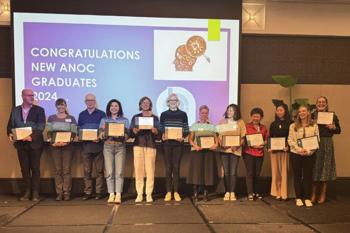
ANOC 2024 graduates featuring Kiwis Sally Adams, Niall McCormack and Mimi Wong (2nd, 3rd and 4th from left)
Networking, awards and recognising commitment
The enjoyable conference dinner was sponsored by Rodenstock Australia and themed red/green or red/blue. The highlight of the evening was the recognition of long-term ACBO members who have given much back to the profession, with Lesley Vedelago awarded the Keith Woodland Award for outstanding contribution to behavioural vision care; Liz Wason, the Graham Peachey Award for outstanding contribution to behavioural education; and Steve Leslie, the President’s Award for his significant contribution to ACBO and behavioural optometry. The annual wine auction resulted in some strong bidding for the high-quality wines, kindly donated by Tony Cosentino from BOC Instruments, raising over $5,000 for the Susan Larter Vision Trust (SLVT) trust, whose support helps financially challenged families receive vision therapy in Australia.
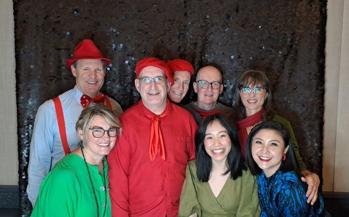
Red/green, red/blue dinner guests (back L-R) Author Evan Brown, Brenton Clark, Keith Miller, Niall McCormack, Sally Adams and (front L-R) Kristine Jensen, Jackie Low and Mimi Wong
The conference closed with further recognition of the tremendous commitment Steve Leslie has given to ACBO as a founding member, long-serving board member, president and now retiring executive director. We were all pleased to hear he will continue to play a key role in specific projects in the future. Anne-Marie McNally was introduced as the new executive director, with more than 20 years’ experience in senior management roles across member associations, international education, in government and the private sector. ACBO also recognised the 13 graduates who completed the Accreditation in Neuro-Optometric Care course, four of whom were Kiwis - congratulations to Jyoti Hari, Mimi Wong, Niall McCormack and Sally Adams! President Melissa Allan then thanked the conference sponsors for their support Rodenstock Australia, BOC Instruments, FAL Lawyers and Good Optical Services, it is a privilege to have your support so that behavioural optometrists and vision therapists can continue to educate themselves to provide the best possible care available to meet patient needs.
Evan Brown is the past-president of ACBO and a behavioural optometric vision care practitioner with interests in paediatric optometry, neuro-optometric rehabilitation and visual dysfunctions, related to learning, and the roles of the autonomic nervous system, stress and distress in the visual process.









